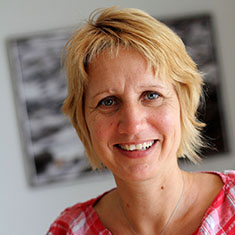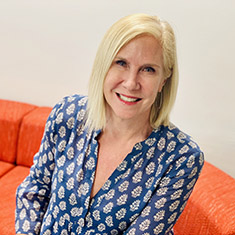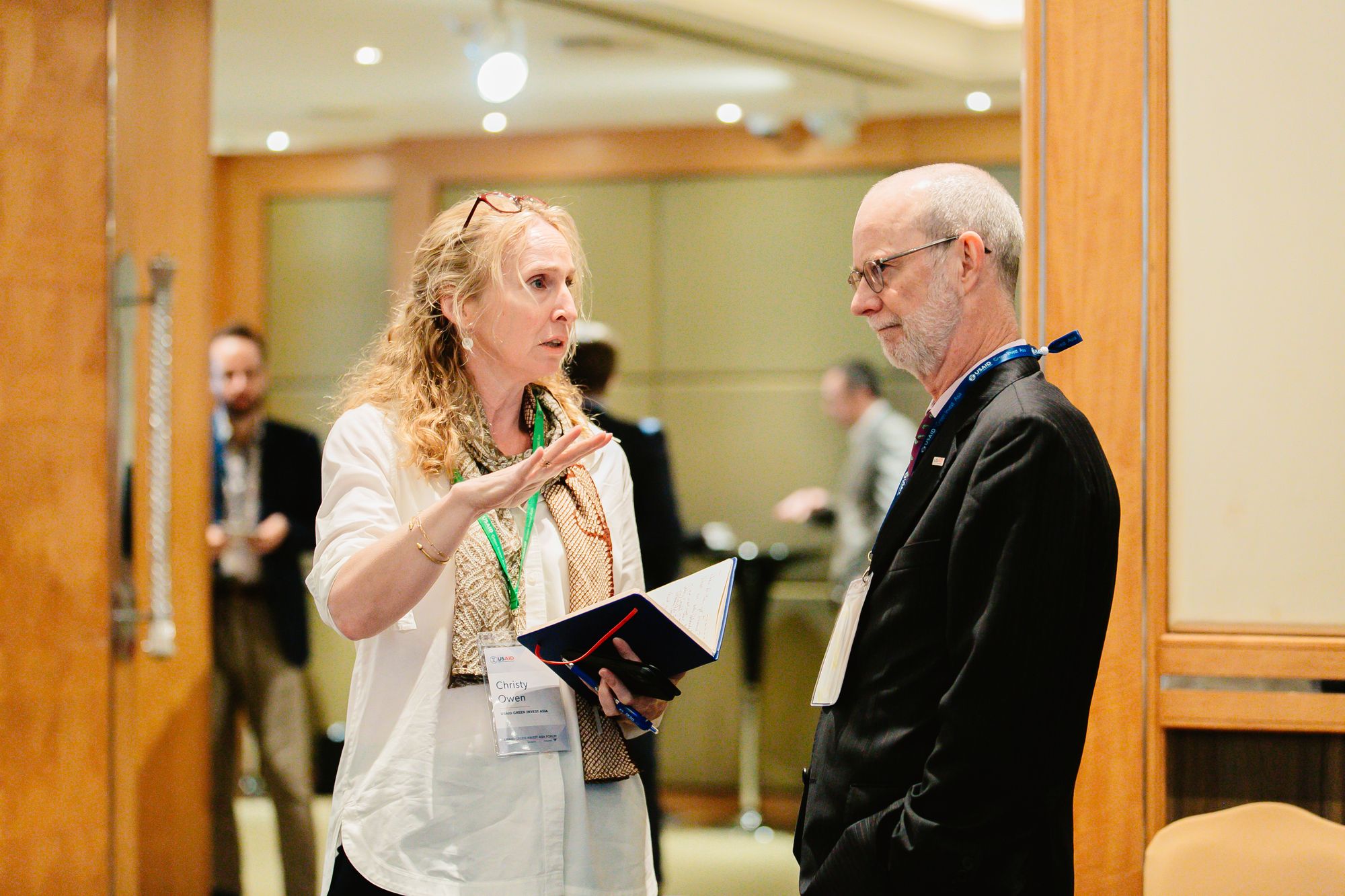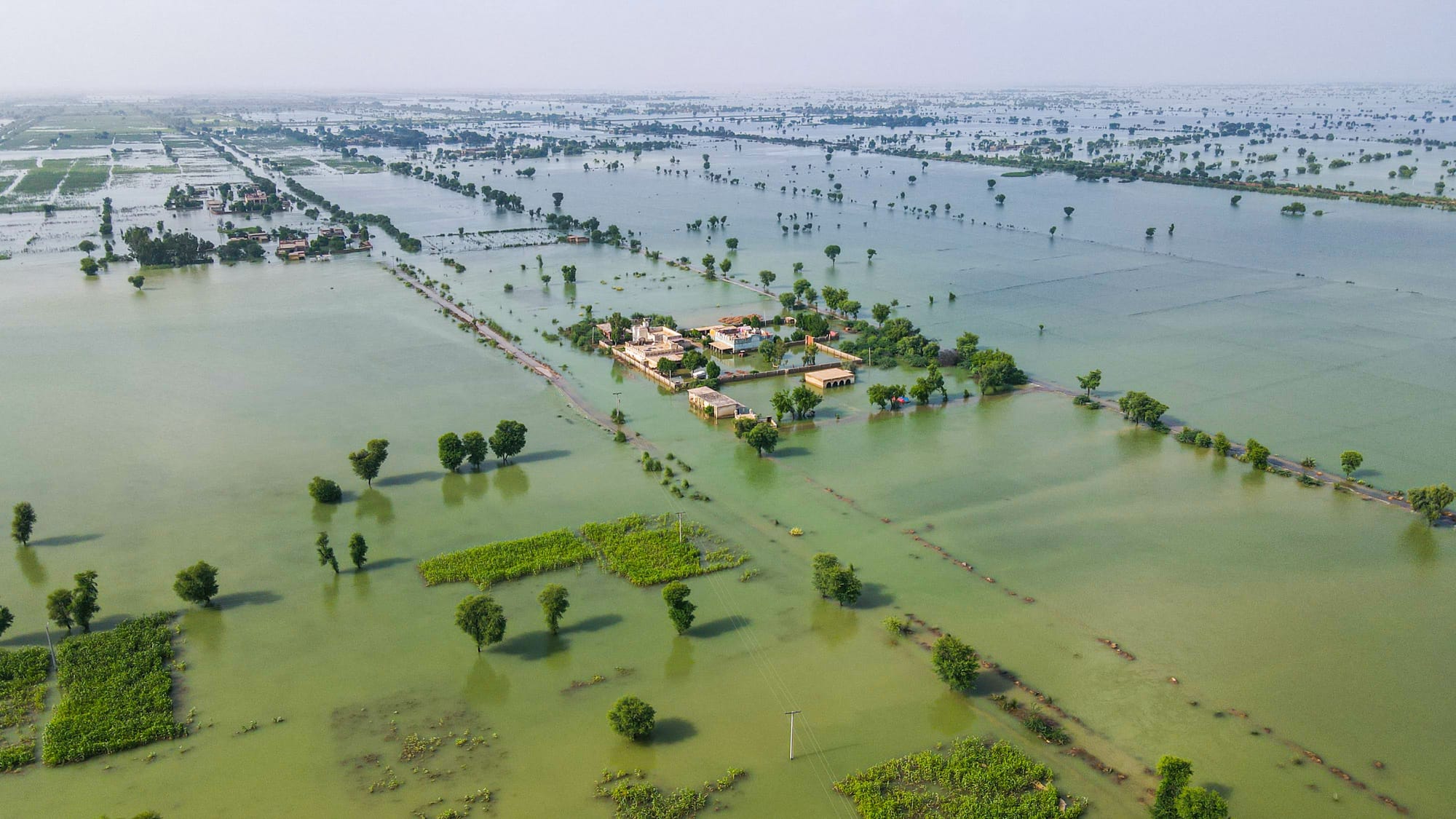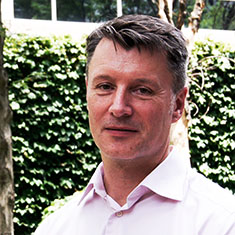Jette Findsen is Vice President of DAI’s Environment practice. Colleen Green is the Vice President of DAI’s Economic Growth practice. They both recently attended COP27 in Egypt. DAI sat down with these two experts to hear their perspectives on the relationship between climate adaptation and economic growth and the future of climate finance. Here’s what they had to say.
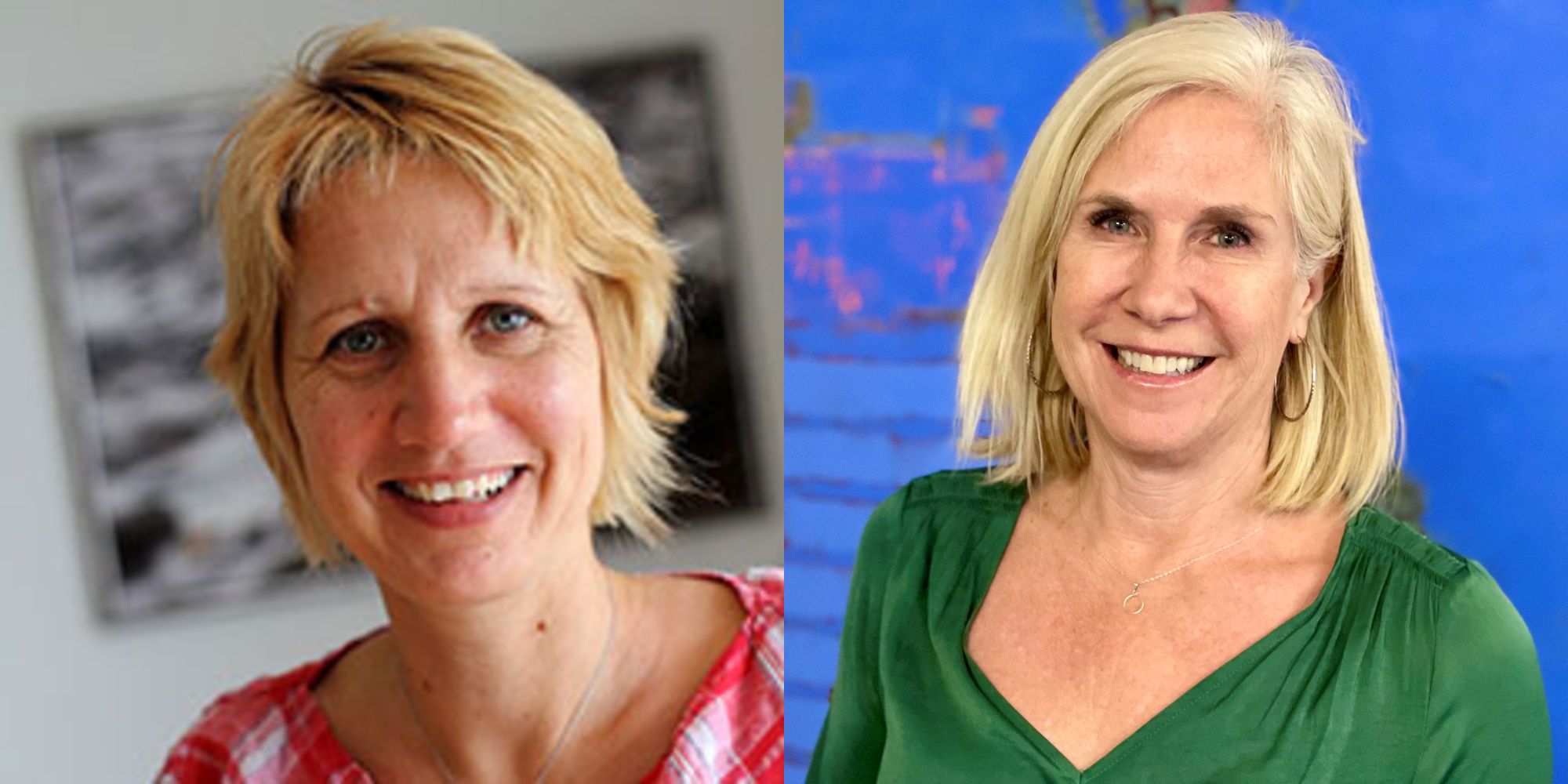
Thanks for speaking with us. First of all, what does climate finance really mean?
Colleen: In the simplest terms, climate finance refers to public, private/commercial, and philanthropic funds that support the reduction of greenhouse gas emissions, finance climate adaptation and mitigation projects, and reduce vulnerability for those most impacted by climate change.
Why is the interconnectedness between climate adaptation and economic growth so important for both of your practice areas?
Jette: The international community has spent many years building communities that are resilient and offer sustainable livelihoods to people. Climate change threatens these development gains through increased incidences of natural disasters, food shortages, infrastructure damage, and the degradation of natural resources. Incorporating climate change into development and economic growth plans is therefore critical to prevent future backsliding. For example, coastal zone development plans that fail to consider sea level rise will put people, industries, and basic infrastructure at risk and prove unsustainable in the long term.
Colleen: For me, the interconnectedness is simple. It’s a necessity! The climate is only getting warmer and climate-related events—droughts, wildfires, flood—are increasing, which devastate unprepared communities across the globe. Governments and businesses need to figure out ways to change how they operate, and quickly. This means identifying and adopting new renewable sources of energy and finding new ways to reduce carbon emissions—whether through fossil fuel replacements, reducing methane from the production process, or managing waste differently. Across DAI's Economic Growth projects, our work often supports the competitiveness of specific sectors and industries. Increasingly, these sectors have a climate focus—whether that is in renewable energy, e-mobility/e-logistics, circular economy/packaging waste or eco-tourism, or applying a sustainability mindset to how they manage their supply chains and do business. It’s time financial institutions and investors prioritize those businesses and projects that are leading the change.
Both of you just attended COP27 but come from different technical backgrounds. What were the standout takeaways from COP27 for each of you? Did you learn anything unexpected?
Jette: I started working on climate change in 1993 while doing an internship at the Global Environment Facility in New York City. For many years, we focused on assessing the potential impacts of climate change and researching options for reducing emissions. At COP27, I was struck by how much we’ve moved away from studying the problem to actually implementing solutions. In fact, there was an entire conference venue dedicated to highlighting new innovations by the private sector.
Colleen: This was my first COP, but there were many takeaways. First and foremost, innovation is continuing across all aspects of climate change. There are so many new things to track and learn, even for people who have spent their careers focused on the topic. From the latest science-driven learning on financing nature-based solutions, to how to work with communities to plan a ‘just transition’ from heavy greenhouse gas emitting energy sources to clean ones, to new thinking on parametric insurance. Second, everyone who works in development—whether you work on economic growth projects, governance efforts, health, or conservation programming—needs to understand the fundamentals of climate change; the critical climatic impacts facing some communities; the national, regional, and multi-lateral structures being developed to support climate mitigation and adaptation; and how they are financed. This is now all our work, and the clock is ticking toward the next major climate catastrophe if we do not convince businesses and governments to do everything in their power to lower greenhouse gas emissions and limit global temperature increases.
Where do you think climate finance is working best?
Jette: Climate finance is most successful when it is rooted in national and local development priorities and is tailored towards overcoming barriers that limit the flow of finance toward climate action. DAI developed a private finance for climate action learning brief for the U.S. Agency for International Development (USAID), which shows that early-stage project design, investment facilitation, and improvements to the enabling environment help catalyze climate finance. The Africa Clean Energy Finance (ACEF) Initiative is an example of how grants and other risk-mitigation vehicles can be strategically deployed to attract significant private investment into clean energy.
Colleen: Honestly, the Europeans are way out ahead of everyone. They have understood from the beginning that human behavior must change and that you need to use policy to shape how both people and businesses can act to do the right thing.
What are the greatest near-term and long-term challenges in climate finance?
Jette: Climate finance has focused primarily on mitigation activities that aim to limit or prevent greenhouse gas emissions. However, the impacts of climate change are increasing across the globe, and investment in adaptation is urgently needed. The UNEP Adaptation Gap Report 2022 estimates that annual adaptation needs are $160–340 billion by 2030 and $315–565 billion by 2050. Innovations that engage the private sector in adaptation are needed; one example is the CRAFT Project, a private sector investment fund for adaptation.
Colleen: In the near term, I think there is a need for governments and regulators to really understand the global nature of climate risks and their impact on national economies. So far, this understanding is uneven—although, over the past two years, many more countries are realizing they cannot wait any longer to act. They need to understand it to put in place frameworks, policies, and standards that shape a positive correlation between climate protection and economic stability. This means utilizing climate risk assessments to look at economic and financial stability and then, cascading it down to financial institutions and investors to include as part of their financing screens.
In the long term, we need to scale up both public AND private financing for climate mitigation and adaptation. This is especially true on the private side, where access to finance has long been an existing barrier for micro, small, and medium-sized businesses and individuals. There is a need for more innovation in blended finance tools to get finance to businesses of all sizes. Finally, from the perspective of equity, there will be climate losers. This means thinking about how we finance and provide social protections to the impossible challenges for small island developing countries and those countries most impacted by climate change.
What are the greatest opportunities or innovations in climate finance?
Jette: Initiatives to “green the financial system,” such as the principles promoted by the Network for Greening the Financial System (NGFS), have the potential to completely transform the global economy by shifting capital towards net-zero and climate-resilient pathways. I’m excited to be working with USAID to support such efforts. For example, on the USAID Business Egypt project, we are collaborating with the Egyptian Banking Institute—the official training institute of the Central Bank—to develop a training program to help Egyptian banks accelerate the adoption of climate finance tools and services.
Colleen: I don’t know if it is the greatest opportunity or innovation, but at COP27, I was happy to see private equity and venture capital groups talking about investing in climate-smart technologies. The economic case for carbon reduction is real and not just because there are subsidies behind it. Many investors are so committed to these innovative climate-focused startups that they have added scientists to their investment committees to ensure the science behind the innovations is as diligent as the business’s financial and managerial investment readiness.
Lastly, what actions can we—as individuals and as parts of broader organizations—do to make more climate-friendly financial decisions? Are there any good resources available online for those interested in learning more?
Jette: There are many ways to encourage more climate-friendly financial decision making, including asking employers whether they incorporate climate-friendly practices in their procurement guidelines and employee retirement plans. The Citizens’ Climate Lobby is a bipartisan group that brings together everyday people to work on climate-friendly policies. Project Drawdown is another useful resource—it provides online resources describing solutions to climate change with actions that can be taken today.
Colleen: On our end, we are often able to help USAID select the most competitive sectors for USAID’s support and investment. We need to continue to lead the charge to ensure that our projects and our company is investing in climate-friendly sectors, innovations, and technologies.
